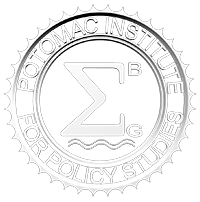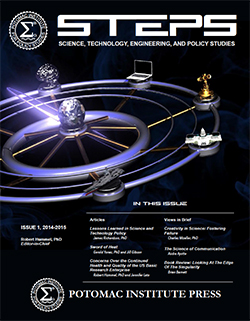Values, Strategy, and America’s Competitive Posture
- Details
- Published: Monday, 26 June 2023 13:07
- Written by The Honorable Alan R. Shaffer; Moriah Locklear, PhD; and Tim Welter, PhD
- Hits: 1312

“The supreme art of war is to subdue the enemy without fighting.... When you surround an army, leave an outlet free. Do not press a desperate foe too hard.”
—Sun Tzu
The Art of War
“One has to understand the Chinese intellectual game, which is what we call ‘Go’ [and] they call ‘weiqi’. …it’s a game of strategic encirclement…our intellectual game is chess. Chess is about victory or defeat. Somebody wins.”
—Former Secretary of State Henry Kissinger
CNN, 2010
Across the 2021-2022 academic year, the Potomac Institute conducted the Global Competition Project (GCP) as a foundation to identify, elevate, and examine some the most consequential aspects of the globally competitive environment in the modern era. Among transitions that the US strategic community faces, maintaining a competitive advantage among peer rivals is arguably the most influential. While shifting from a focus on counterterrorism, which remains a vital concern, the US confronts a societal-level competition that challenges US dominance in military, economic, and political spheres.
The project’s study makes clear the interdependency of these spheres and the complex nature of the competition. For example, a flourishing economy is essential for government funding of a strong national defense, which in turn is needed to deter attacks that could impact other important national interests.1 Competition to lead in the development and employment of technology impacts businesses and thus the health of the nation’s economy. Especially for the United States, technology is historically consequential to the fielding of military might that renders required deterrent effects and operational capabilities to keep the nation safe and prosperous. More broadly, a continuous supply of scientists and engineers is the critical enabler for technology leadership, which is driving the development of a more a competitive environment across STEM education2. Competition in certain sectors, such as food, microelectronics, metals and minerals, pharmaceuticals, and petrochemicals, can have profound impacts when global supply chains are interrupted. Each area requires a strategy for the US to remain competitive, so that the US can remain dominant in the interlocking vectors of national power.
However, we pose the question: Is there a grand strategy to preserve the competitive posture of America in the “international order”? What are the goals and purposes of the strategies addressing individual competitive domains? What is a universal strategy on which the multi-dimensional competitions can unite in a common effective position?



